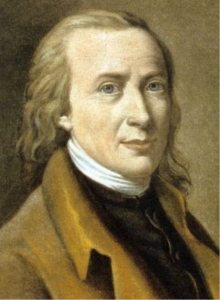By Anselmo's grave
(Poet's title: Am Grabe Anselmos)
Set by Schubert:
D 504
[November 4, 1816]
Part of The Theresa Grob Album
Dass ich dich verloren habe,
Dass du nicht mehr bist,
Ach, dass hier in diesem Grabe
Mein Anselmo ist,
Das ist mein Schmerz, das ist mein Schmerz!!!
Seht, wie liebten wir uns beide,
Und so lang ich bin, kommt Freude
Niemals wieder in mein Herz.
The fact that I have lost you,
That you no longer exist,
Oh, the fact that here in this grave
Is my Anselmo,
That is my agony! That is my agony!!!
See how much we loved each other, the two of us,
And for as long as I exist joy will come
Never again into my heart.
All translations into English that appear on this website, unless otherwise stated, are by Malcolm Wren. You are free to use them on condition that you acknowledge Malcolm Wren as the translator and schubertsong.uk as the source. Unless otherwise stated, the comments and essays that appear after the texts and translations are by Malcolm Wren and are © Copyright.
☙
Themes and images in this text:
Little Matthias Claudius (nicknamed Anselmo) died soon after he was born on 30th September 1772. He was the first child of the poet and his wife Rebecca. There is a general assumption that since infant mortality was so common at the time, parents did not feel the loss of their babies too intensely, but that is not the impression given by this text.
Or does the very fact that the father was prepared to turn such an experience into the occasion for writing and publishing a poem suggest that he was not as distressed as he claims? What are we to make of the triple exclamation marks? Do we give the benefit of the doubt and accept that the poet has reached the limits of what can be uttered or are they rather a sign that he wants to flaunt and exaggerate his grief???
☙
Original Spelling and notes on the text Am Grabe Anselmos Daß ich dich verlohren habe, Daß du nicht mehr bist, Ach! daß hier in diesem Grabe Mein Anselmo ist, Das ist mein Schmerz! das ist mein Schmerz!!! Seht, wie liebten wir uns beyde1, Und, so lang' ich bin, kommt Freude Niemahls wieder in mein Herz. 1 Schubert seems to have changed this line from 'Seht, wir liebten uns, wir beyde' (You see, we loved each other, the two of us) to 'Seht, wie liebten wir uns beyde' (See how much we loved each other, the two of us)
Confirmed by Peter Rastl with Schubert’s probable source, ASMUS omnia sua SECUM portans, oder Sämmtliche Werke des Wandsbecker Bothen, I. und II. Theil. Beym Verfasser, und in Commißion bey Fr. Perthes in Hamburg. [1774], pages 21-22; and with Poetische Blumenlese auf das Jahr 1774. Göttingen und Gotha, bey Johann Christian Dieterich, page 163.
First published in Der Deutsche, sonst Wandsbecker Bothe. Ao. 1773. No. 140. Mittwochs, den 1sten September.
To see an early edition of the text, go to page 21 here: https://resolver.sub.uni-hamburg.de/kitodo/PPN840695020


